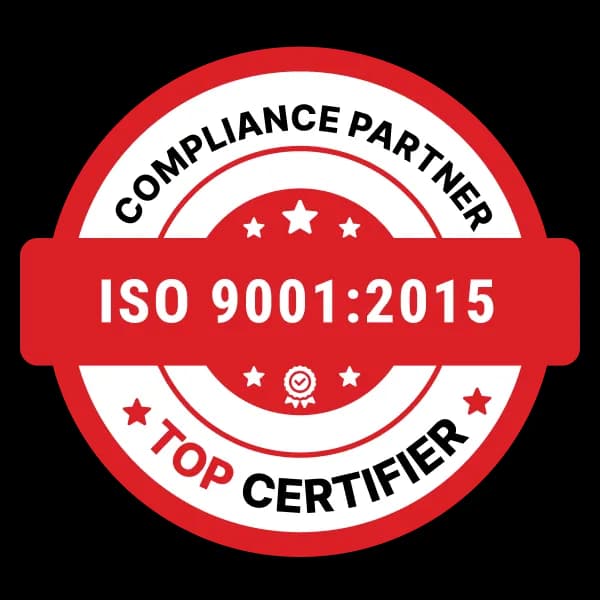Website Redesign Checklist: The Ultimate Guide for Marketers

Contributor
Rutika Sojitra
Uploaded
28 August, 2025
Read Time
7 Minutes
Your website is not just an online brochure but the heart of your marketing strategy. It is where first impressions happen, leads are captured, and conversions are won or lost. But what if your website is out of date, sluggish or not consistent with the quality of your brand? Visitors depart, search rankings fall and opportunities vanish.
Here’s where you need to have a website redesign. It’s not just an aesthetic update, a redesign is a tactical decision to enhance user experience, produce better SEO results and to position your brand in line with the way people shop today. For marketers, the opportunity is to take a static website as your primary and supercharge it into a growth engine that powers every campaign.
Here, we’ll take you through a comprehensive, step-by-step website redesign checklist specifically for marketers including such elements as goal-setting, SEO, conversion optimization and post-launch tracking. Whether you are rebranding, pursuing better rankings or higher conversions, this checklist will let you do all that the first time. With the correct Digital Marketing Services, this new website can increase visibility, enhance brand credibility, and convert website visitors into true followers.
Why Marketers Need a Website Redesign Checklist
Marketers are constantly challenged with achieving the right combination of creativity and results. A website redesign checklist can help you:
- Match the design decision to the business goal.
- Preserve old SEO and restructure as necessary.
- Enhanced UX to help boost conversions.
- Consistently brand in all online first touch communications.
Without a checklist, redesigns tend to be concentrated on the visual, and forget about everything else like SEO, content strategy, CRO (conversion rate optimization).
Website Redesign Checklist for Marketers
1. Define Your Goals and KPIs
Create goals for your redesigned website before you open up a design mockup, decide what you want your new website to accomplish. A website without goals is like campaigning without clarity on what you need to hit to achieve victory.
For example:
- If you are looking for leads, you need a great offer, which you place on a page that people give you their email/phone etc. On landing pages, you’ll also need strategically placed CTAs, streamlined forms, and high-octane thanks pages.
- If your objective is increased sales, the new design should prioritize product pages, checkout optimization, and trust elements such as reviews.
- If brand awareness is the goal, the redesign should emphasize visual storytelling, brand values, and premium content.
Once the goals are made concrete, associate measurable KPIs like a 30% drop in bounce rate or a 20% rise in leads or a 40% increase in engagement to judge the redesign’s success.
2. Audit the Current Website
Redesign should be based on real data, not guesswork. Begin with a holistic review to know what works and what doesn’t.
- Content Audit: Determine which are the high traffic and converting pages. These should be maintained or enhanced. You can update, merge or delete low-quality or old content.
- SEO Audit: Check your keyword rankings, quality of backlinks, site errors, and average page load time. Some tools, like SEMrush, Ahrefs, and Screaming Frog, are priceless.
- UX Audit: Look at hotmaps and session recordings on Hotjar or Crazy Egg to watch how people use your site. Are they abandoning forms? Are they confused by navigation?
This way you retain the strengths of your website while addressing the weaknesses.
3. Understand Your Audience and Buyer Personas
So, your new site should reflect the needs, desires and expectations of your visitors. As marketers, it’s essential to revisit and tweak buyer personas.
Ask questions like:
- What are their pain points?
- What devices are they using more than others?
- Do they like reading (blogs, videos, guides, or case studies)?
- What triggers their buying decisions?
Example: If you are talking to busy professionals, the redesign should focus on simplifying their journey, fast navigation, and clear CTA. If you’re marketing primarily to a young audience of Gen Z, interactive visuals, short-form content, and bold branding will likely resonate better.
A web redesign checklist should take into account how to map customer journeys from awareness to purchase and be designed in such a way that every touch-point reinforces conversions.
4. Competitor Analysis
Your competitors are always improving, and so should you. Read at least 5–10 of your top competitors’ websites.
Look for:
- Design Trends: Do your competitors have bold typography, minimal layouts or bright illustrations?
- Functionality: Do they have chatbots, interactive product demos or personalization capabilities?
- Conversion Elements: Where do they use CTAs? Are forms short and frictionless?
Competitive analysis will show you not just potential resources, but how to make your site look current and part of the industry without becoming a copycat.
5. Prioritize Mobile-First and Responsive Design
With 50%+ of web traffic now coming from mobile devices, mobile-first is no longer a nice to have, it’s a must have. The best website redesign checklist will prioritize mobile responsiveness.
Ensure that:
- Responsive grid layouts that adapt to different screen sizes.
- Fast-loading images optimized for mobile.
- Simplified navigation with thumb-friendly buttons.
- Intuitive CTAs that are easy to click on mobile.
It’s not just about usability, it’s also an SEO ranking factor, and that is being mobile-first. Mobile-first indexing by Google judges you on mobile performance.
6. Improve Site Architecture & Navigation
Great design is no good if users can’t locate what they are seeking. Marketers and UX designers need to work together to create a site structure that moves people from visitor to converter easily.
Key improvements include:
Logical Organization: Categorize pages by content.
- Keep Menus Simple: Do not inundate users with choices that have 5-7 top-level items.
- Breadcrumbs: To help users navigate back.
- Internal Linking: Link up your blog posts to related services for SEO and user engagement.
- Remember: The more clicks a user has to make to get somewhere, the more likely you are to lose them.
7. SEO Optimization from the Ground Up
Too many marketers see months of SEO progress vanish during redesigns because they forget about optimization. Ensure and enhance your rankings by:
- Keeping your best performing URLs and 301 redirect the rest.
- Re-optimizing metatags, headers, and content for both primary and LSI keywords.
- Making sure your site loads fast by using optimized images, enabling cache and deferring code.
- Implementing schema markup for products, reviews, and FAQs.
- Enhancing your Core Web Vitals such as Largest Contentful Paint (LCP) and Cumulative Layout Shift (CLS).
Treat SEO as the groundwork of your redesign, not as an afterthought.
8. Content Strategy & Copywriting
The content of your site is the voice of your brand. Redesigns are the perfect reason to clean up your messaging so it resonates with your audience.
- Optimisation of Copy: Use persuasive, benefit-driven language instead of jargon. Concentrate on “what’s in it for the user.”
- Storytelling: Share brand stories, case studies, or customer journeys that resonate emotionally.
- Content Mix: Strike balance of evergreen content (blogs, guides) and dynamic media (videos, podcasts, infographics).
- SEO Content Plan: Develop keyword-infused blog calendar to increase organic reach after launch.
New design, without new content, is the equivalent of painting cracks on the wall. It sounds purty but it doesn’t fix the problem.
9. Conversion Rate Optimization (CRO) Elements
For that, the new site needs to be designed to be successful. Give attention to Conversion Rate Optimization (CRO):
- Put your CTAs above the fold and all over the page (but not too much).
- Use a contrasting color to make buttons pop.
- Keep forms to a minimum and only ask for what you need.
- Include trust building signals: testimonials, customer logos, case studies, certificates, or security badges.
- Continually refine layout and messaging with A/B testing.
CRO is the stage where design becomes revenue for marketers.
10. Integrate Marketing Tools & Analytics
Today's marketing is all about data-driven decisions and automation. A website overhaul is the ideal time to incorporate tools such as:
- CRM Systems: Sync leads right into Salesforce, HubSpot, or Zoho.
- Email Marketing: Integrate with Mailchimp or Klaviyo for nurturing campaigns.
- Analytics: Leverage Google Analytics 4 and Tag Manager for comprehensive analysis.
- Chatbots & AI Tools: Systematize your FAQs to lead qualification, or even personalized product recommendations!
This synergy makes it easy for your marketing plan to work in tandem with your channels.
Common Mistakes Marketers Should Avoid
- Skipping SEO migration and rankings drop.
- And design elements that slow the site down.
- Re-designing for beauty and losing the conversions.
- Passing over mobile first design and forfeiting mobile users.
- Launching without thorough testing.
Conclusion
A website redesign is a huge opportunity for marketing pros to re-brand their brand position, bring in more leads, and increase yours and your company's bottom line. Follow this full list and you’ll make sure that your new website looks modern, but also that helps you as a powerful marketing device. With the correct digital marketing services, your revamped website will be able to generate measurable values in increasing visitors, user experience, and conversion rates.
A good redesign is not just a new logo, background and some tweaking. There is a mix of creativity, understanding and some marketing strategy which all works for one goal to grow the business.
Latest Articles

Unsure if Python suits your project? Explore the advantages and disadvantages of Python to see if it’s the right choice for your needs.

A practical guide to web performance optimization strategies that enhance speed, stability, and user satisfaction in real-world scenarios.

Deploy modern apps faster with top serverless frameworks. Compare features, DX, scaling, cost controls, and CI/CD fit for production-ready releases.
FAQs
Ready to Take Your Business to the Next Level?
Unlock new opportunities with expert solutions designed to elevate your brand. From strategy to execution, we empower your business with the tools, technology and talent it needs to thrive in today’s digital world.




